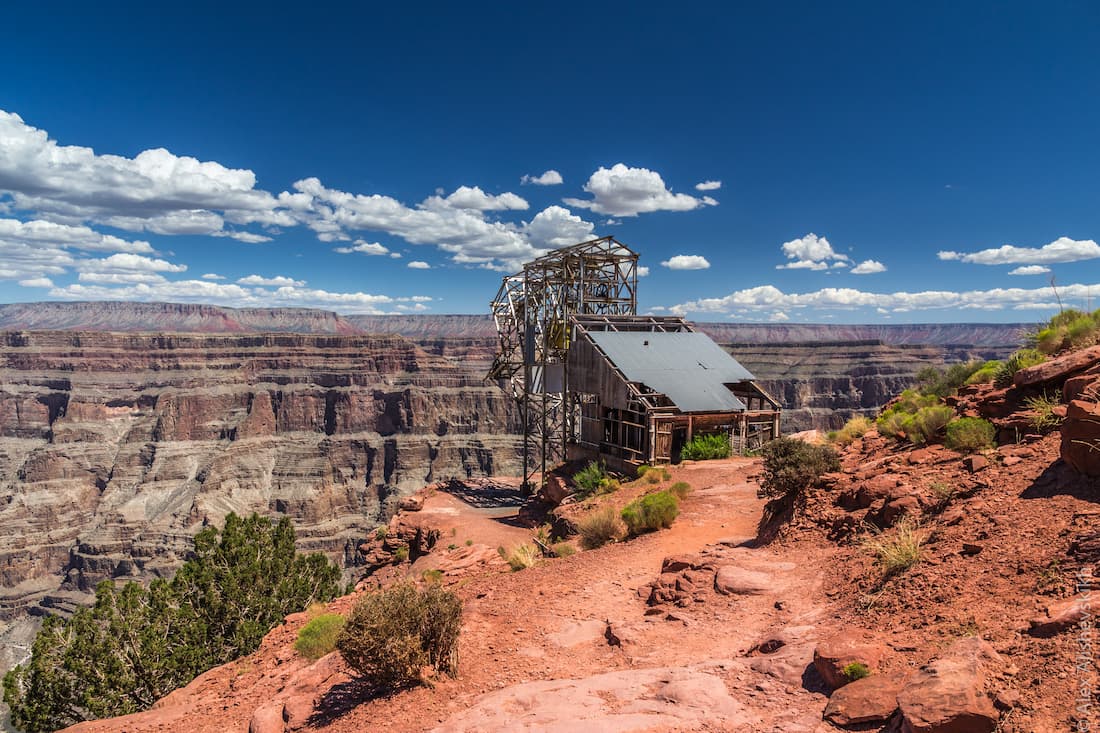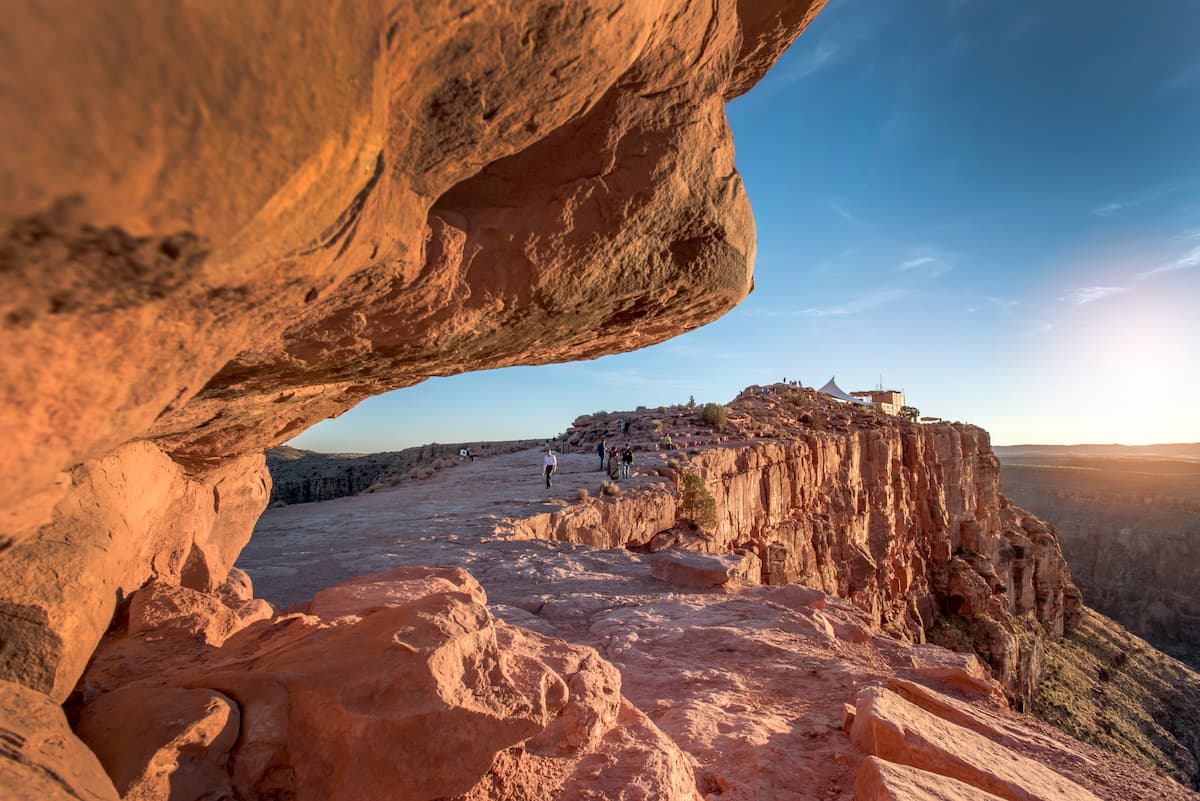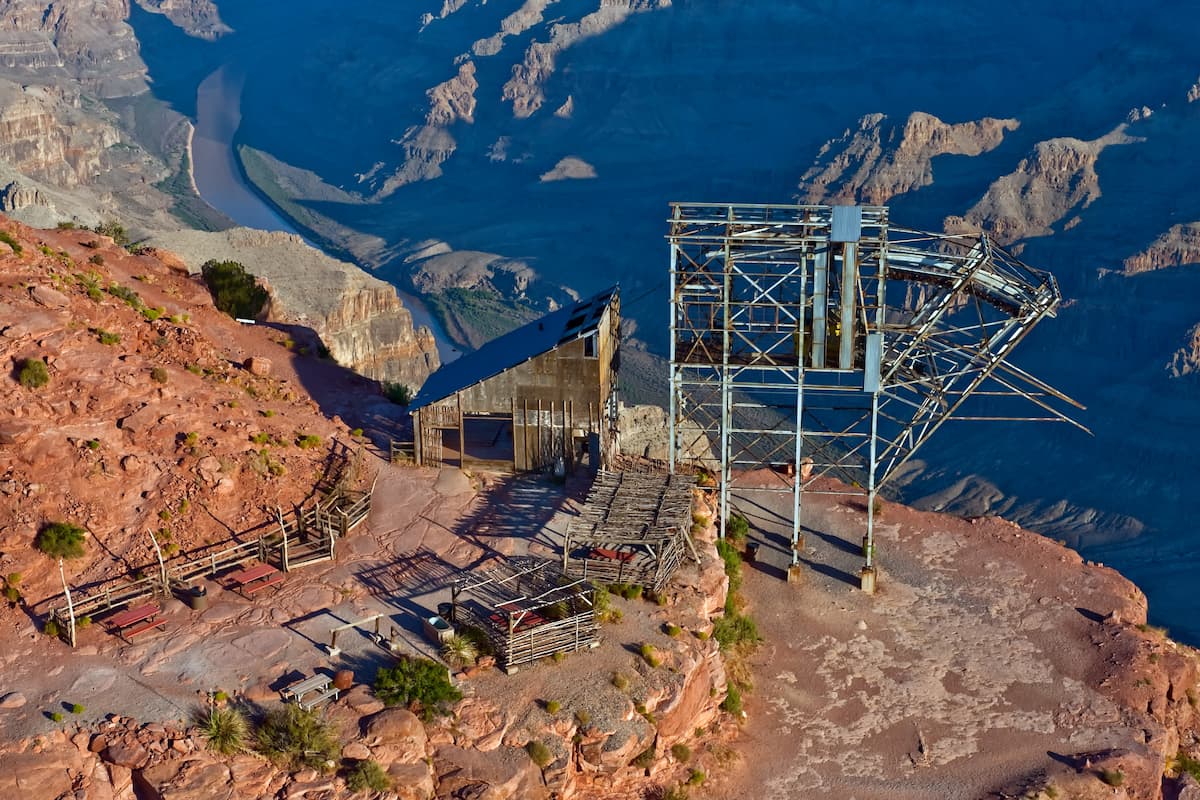Guano Point: A Grand Canyon View with a Story
A View with a Story
Towering above the Colorado River with 300-degree views of the canyon, this dramatic overlook offers one of the most immersive and photo-worthy experiences on the West Rim.
But beyond the breathtaking scenery lies a lesser-known story: one of brave ambition, hard labor and mid-century engineering set against the timeless power of the canyon.

The Guano Mining Days
The story begins in 1930, when a guano cave was discovered on the south side of the canyon wall. Guano, better known as bat droppings, may not sound glamorous, but it was once considered a valuable fertilizer rich in nitrogen.
By 1957, the U.S. Guano Corporation invested $3.5 million to extract the deposit. It built a massive aerial tramway spanning 7,500 feet across the canyon, connecting the guano cave to what is now Guano Point. The tramway had a vertical lift of 2,500 feet, and for nearly two decades, workers would ride it across the canyon to mine the bat guano.
The tram system was eventually abandoned but parts of it remain today – giving visitors a surreal look at an ambitious industrial feat.

What Remains Today
Standing at Guano Point today, you can still see the rusted remains of the tram towers silently watching over the canyon. They’re a monument to human ingenuity and a physical reminder of the many layers of Grand Canyon history.
For the Hualapai Tribe, who own and operate Grand Canyon West, preserving these structures is a way to honor both the cultural and industrial legacies that shaped this land.

There’s even more to do at Guano Point than just look around (though the views alone are worth it):
- Highpoint Hike – A short, unpaved trail leads to one of the highest accessible points in the area. No railings, no barriers – just you, the canyon and the sky.
- Historic Tram Remains – Snap a photo of the massive steel structure that once carried miners across the canyon.
- Guano Point Café – Grab lunch or a snack with 360-degree canyon views from the outdoor seating area.
- Native American Market – Shop handcrafted goods and souvenirs made by indigenous artisans.
Whether you’re a history buff, returning visitor or simply someone who loves places with stories to tell, Guano Point is one of the most powerful, panoramic stops at Grand Canyon West.
